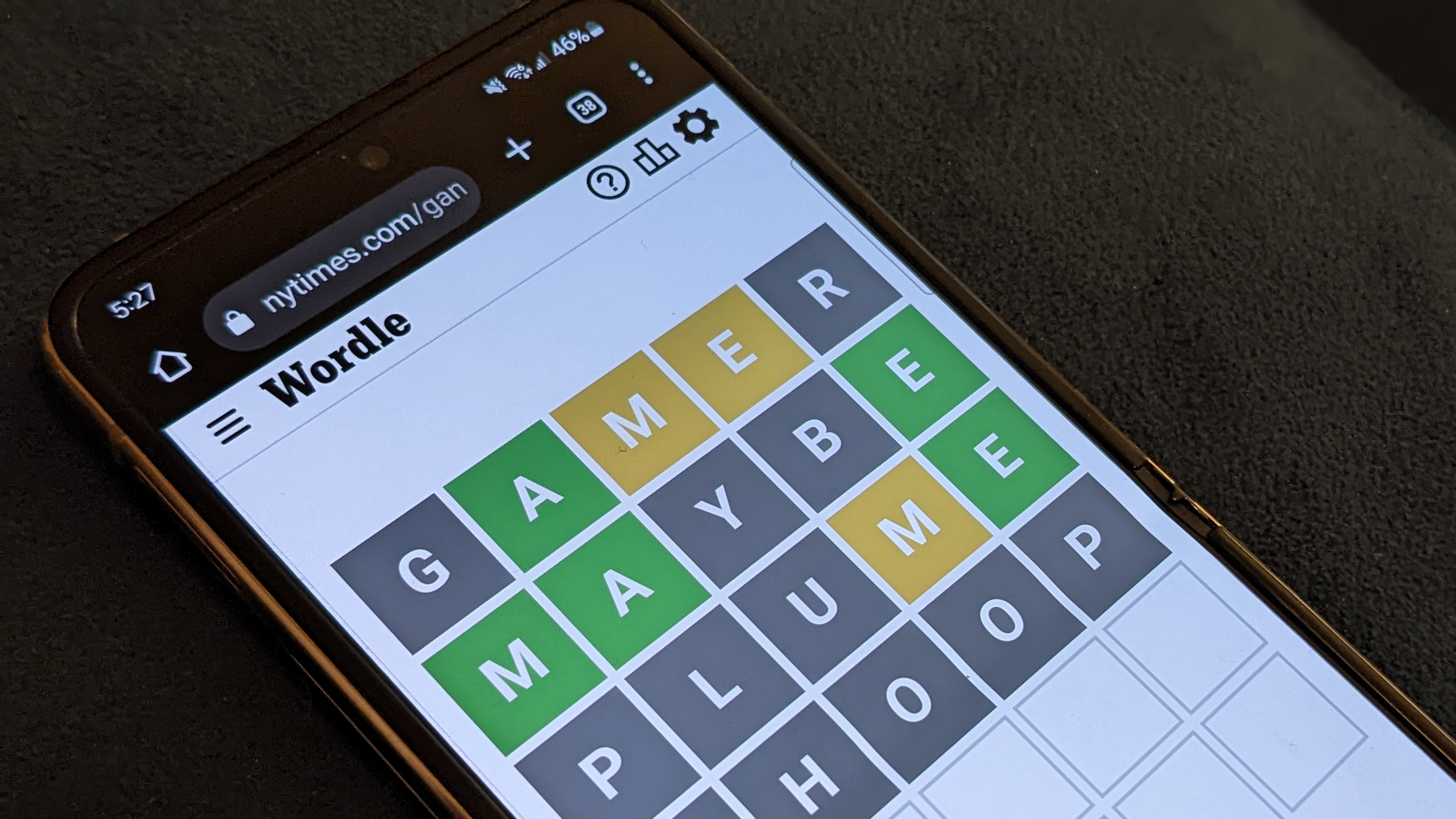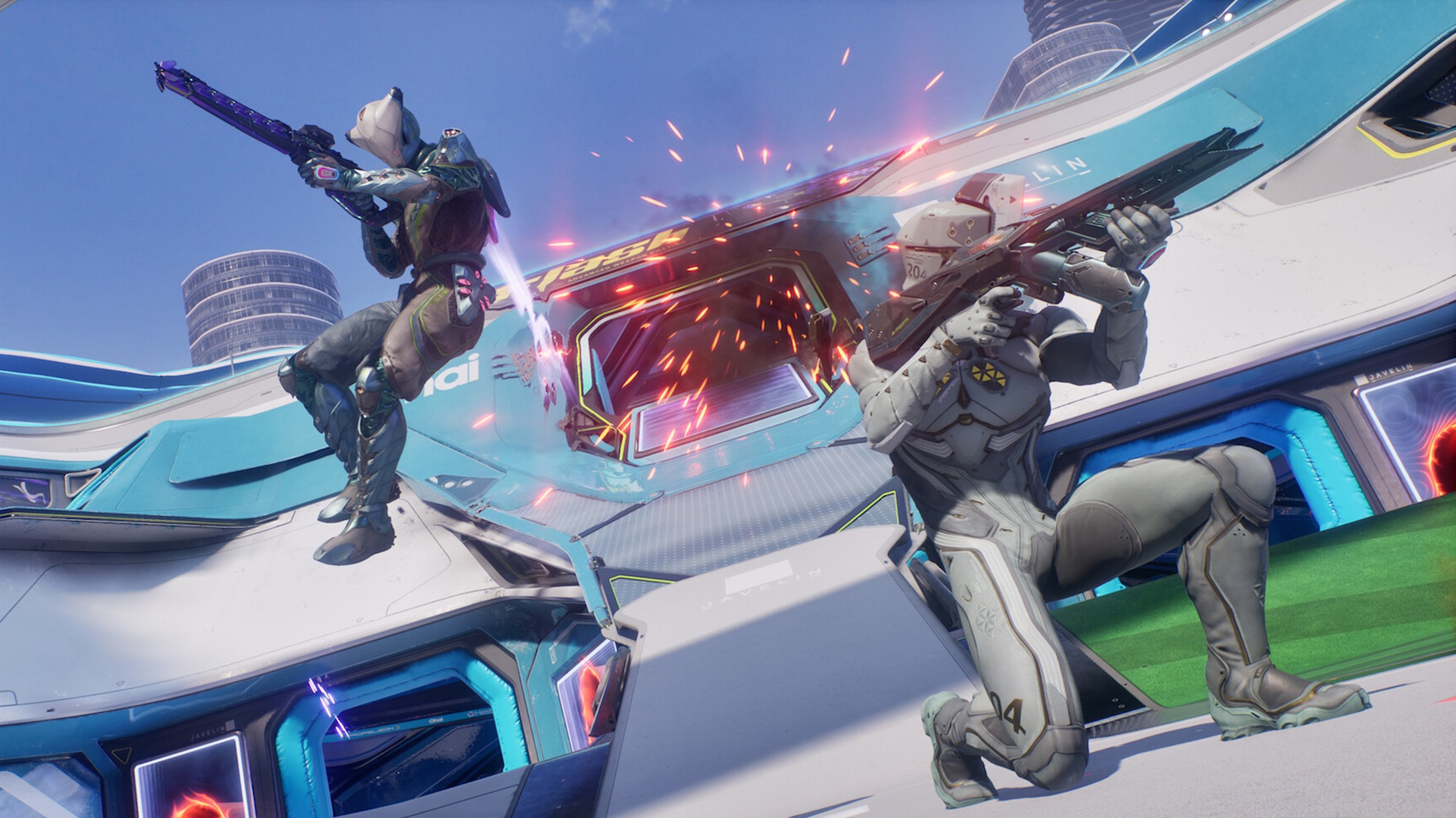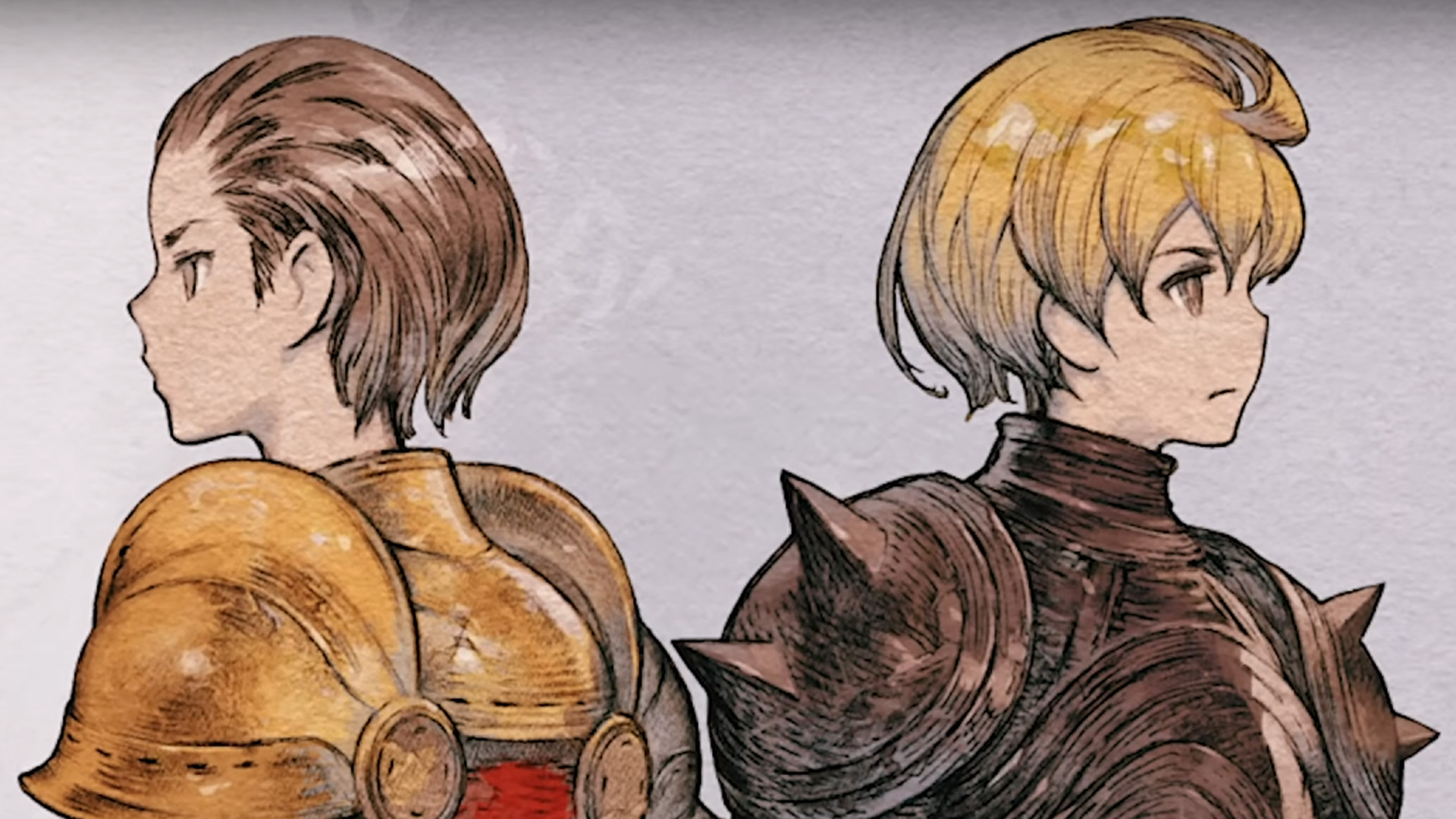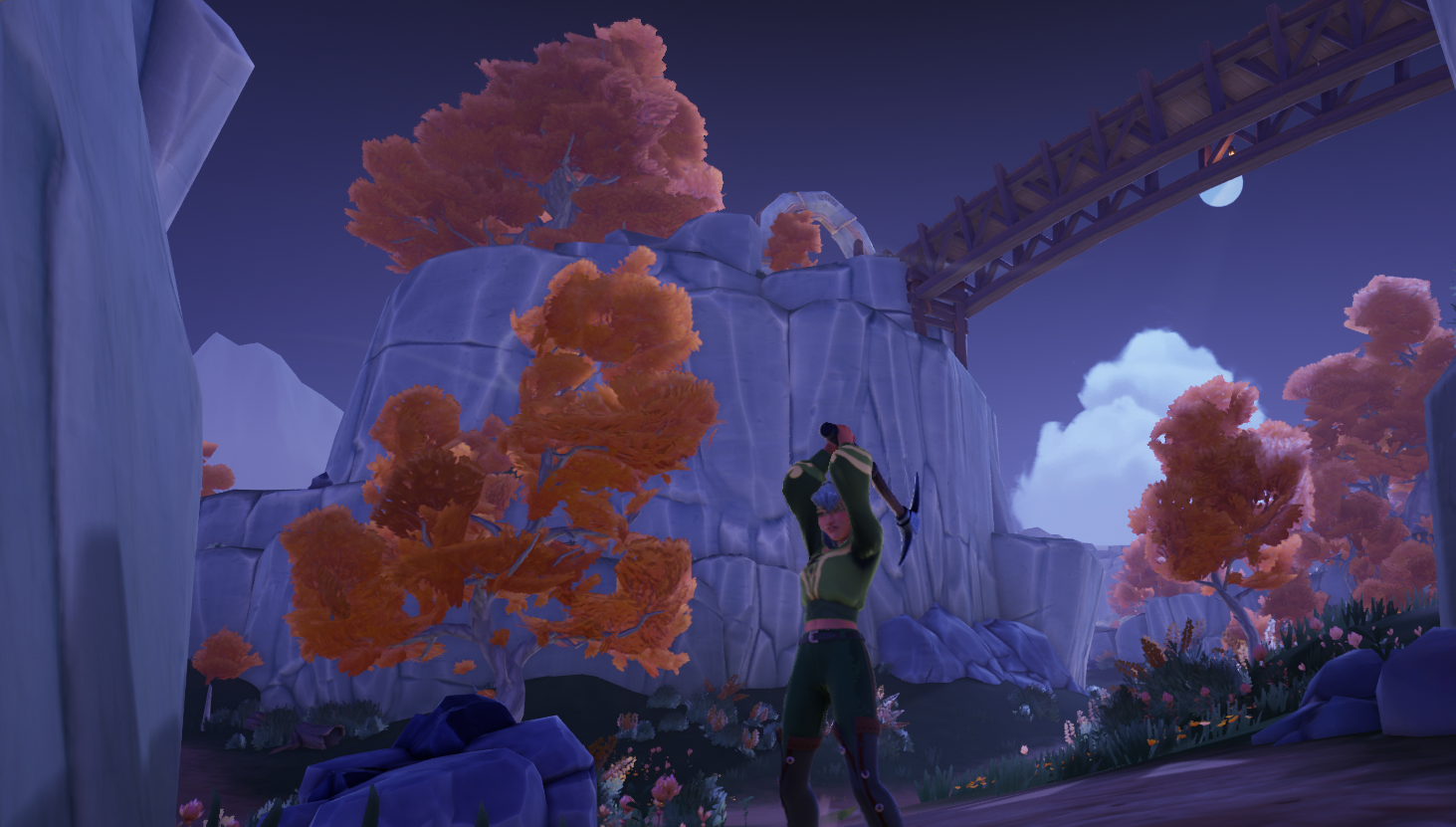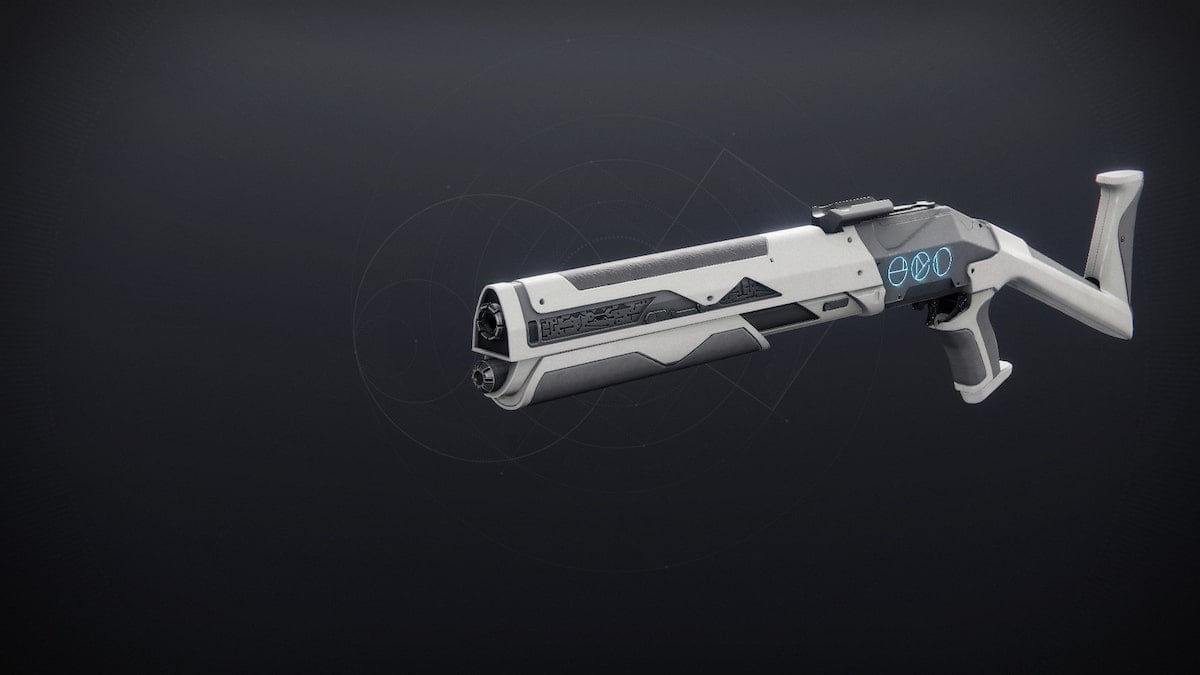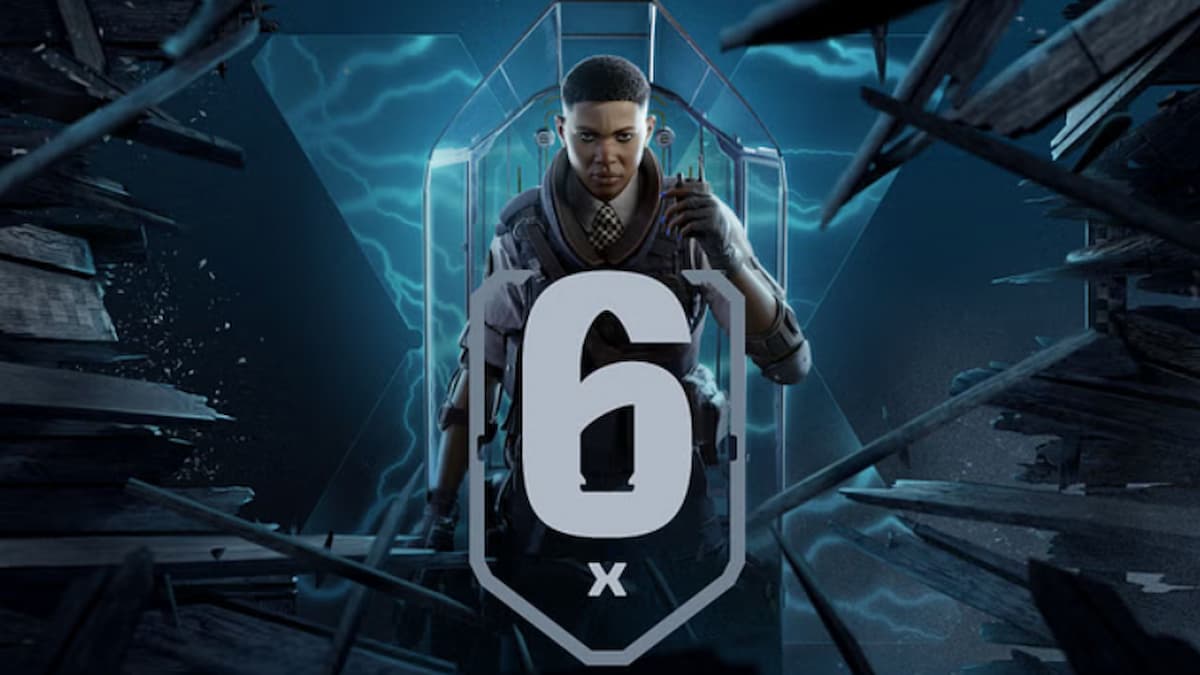
<p><img loading="lazy" src="https://www.gameinformer.com/sites/default/files/styles/body_default/public/2025/05/19/d8218d72/hero.jpg" width="800" height="450" alt="" typeof="foaf:Image" class="image-style-body-default" /></p> <p class="text-align-center"><em>Square Enix is celebrating Final Fantasy XI's 23rd anniversary right now with new updates to the game, </em><a href="https://press.na.square-enix.com/SQUARE-ENIX-CELEBRATES-FINAL-FANTASY-XI-ONLINES-23RD-ANNIVERSARY-WITH-"><em>which you can read about here</em></a><em>. In honor of the game's impressive longevity, we've published this piece about the game's enduring legacy that appeared in </em><a href="https://www.gameinformer.com/magazine"><em>Issue 366</em></a><em> of Game Informer. You can now read the full piece here for free!</em></p><p class="text-align-center"><em>The print magazine will be back very, very soon. To be notified when you will be able to subscribe, </em><a href="https://www.gameinformer.com/subscribe"><em>make a Game Informer account here</em></a><em>.</em></p><p>When Koichi Ishii was hand-picked to direct Final Fantasy XI, he had not worked on the series for almost ten years. From 1987 to 1990, in the era when marquee role-playing games could go from original to number two in as many years, he had gotten his career off the ground with planning and graphics work on the original Final Fantasy and its follow-ups. By the turn of the millennium, he had distinguished himself with the Mana series and was reluctant to return to Final Fantasy even though Hironobu Sakaguchi, series creator, was asking him personally.</p><p>“I kept declining him for a while. But he insisted I give MMORPGs a try before making a final decision,” said Ishii in a series of interviews with FFXI producer Akihiko Matsui. Ishii, regretful of having left the Mana team once before, refused Sakaguchi several times. “But Mr. Sakaguchi insisted, ‘I’ll prepare what you need to play EverQuest, so just give it a try. If you still refuse after trying it, I won’t bring it up again,’ so I had no choice but to play.”</p><p>Decades on, he remembers noticing he could gaze up at the sky in EverQuest and watch as countless players roamed about in the shared space that, though virtual, felt real. He realized the project Sakaguchi was insistently pestering him to consider was a chance to achieve something he’d dreamed of for years. “It dawned on me: I could use this new technology to realize the fantasy world I’d always envisioned, something I’d wanted to do since FFI,” said Ishii. “You could say I used FFXI to fulfill a personal creative desire: to bring a world to life.”</p> <img loading="lazy" src="https://www.gameinformer.com/sites/default/files/2025/05/19/64461d8e/01.jpg" typeof="foaf:Image" alt> Image Illustration: 2014, 2015, 2024 © Yoshitaka Amano <p>When Yoshitaka Amano, illustrator and concept artist for the series, was brought on to start the process of bringing the world to life, he began with something unconventional. When Ishii came to visit for a meeting early in the development cycle, he found Amano with four massive sheets of paper laid out in the studio – a combined width of twelve feet. Amano was painting a world map. The final product, a sprawling and striking image depicting the geography of Vana’Diel intermixed with its fauna and mythological beings, references traditional Japanese illustrated scrolls and folding screens like the Rakuchu Rakugai-zu. Amano’s art is always evocative in ways the games it informs cannot convey, but his map of Vana’Diel had a grandeur and subtlety unique even to his body of work. More than an illustration for a game, it seems to be a classical work plucked from the world of Final Fantasy itself. To Amano, who was overwhelmed by Ishii’s vision and sense of place, it may as well have been.</p><p>“Drawing a world map of Vana’diel seemed like it’d be bringing an entire world to life,” said Amano. “And while it could just be a presumptuous prediction, perhaps stories of Vana’diel will be retold hundreds of years later as some sort of legendary myth.”</p><p>On the business side of things, matters were less romantic. The game was built for the PlayStation 2 and many on the development team did not expect it to last longer than the console’s life cycle. The game, miraculously, remains online to this day. To its many players, new and old, its skies inspire the same wonder and instill the same sense of reality that EverQuest did all those years ago to Ishii. Vana’diel, no matter how many hardware peripherals and screens it passes through before reaching our senses, is very real. Brought to life not just by its passionate creators, but equally by its loyal players.</p> <img loading="lazy" src="https://www.gameinformer.com/sites/default/files/styles/body_default/public/2025/05/19/77a9daf8/02.jpg" typeof="foaf:Image" alt class="image-style-body-default"> <h2>Coming to Vana’diel</h2><p>In Spring, 2004, the boy who would become Heghmoh, Galka warrior, feels his Nokia cell phone buzz with news from his brother. Final Fantasy XI, the game they’d been waiting for, finally arrived in the mail. He and his friend ran home to set up the game with its included hard drive disk and network adapter. “I was expecting to go home and play, start playing this game that I had been reading about for, you know, a year at that point,” Heghmoh says. Like everyone else who set the game up that release night, he and his friends watched as the game installed for over four hours, chipper music looping all the while and burning itself into their brains. On a notepad, they brainstormed potential character names as the progress bar slowly crawled to completion.</p><p>“And then my brother’s like, ‘wait, hold on. I got it,’” Heghmoh says, “And he digs through our closet, comes out with this Klingon to English dictionary.” Heghmoh. Klingon for fatal. “That’s my beagle’s name. It’s been every character name that I’ve had in a video game.”</p><p>Kurandoh, whose first video game was Final Fantasy VII, used pay from his first job in high school to get a PlayStation 2 bundled with FFXI and a hard drive. “Twenty years. It’s the game I tried to quit and kept coming back to,” Kurandoh says.</p> <img loading="lazy" src="https://www.gameinformer.com/sites/default/files/styles/body_default/public/2025/05/19/0651f254/03.jpg" typeof="foaf:Image" alt class="image-style-body-default"> <p>Seth, mid-twenties and experienced with the older FF titles, saw the future he had already been previewing with online games like SOCOM mixing with the console RPG in ads for FFXI. “This seemed like where games were going in the future,” Seth says. “When it dropped for PlayStation 2, I went and got it… It literally took like, at least two days because there were so many people downloading.”</p><p>For Brendan Finch, it was a few years later that he ran into an FFXI demo disc for the Xbox 360 port’s beta tucked in a magazine while on a grocery run with his mom. He didn’t know anything about the game he was downloading that night after convincing her to buy the magazine for him. He had never even played an online game. When it was later released properly, coincidentally on his birthday, the game cemented itself as a fixture in his life. Nearly 12,000 hours of playtime and close to two decades later it remains one of his favorite games of all time.</p><p>Every successful MMO thrives on its community, but fans of Final Fantasy XI are quick to tell anyone who asks that the world of Vana’diel felt different than anything available at the time. “The old Final Fantasy XI, in one word, is ‘struggle,’” said Kurandoh, remembering the game’s peak era prior to a slew of updates that modernized systems and sanded down some of the original release’s friction. “It’s a game about struggle. It’s a game where you get punched in the mouth a lot.”</p> <img loading="lazy" src="https://www.gameinformer.com/sites/default/files/styles/body_default/public/2025/05/19/c6e09209/04.jpg" typeof="foaf:Image" alt class="image-style-body-default"> <p>By design, FFXI utilized difficulty and obfuscation to bring people together. At the beginning of the game, players are dropped into their starting city with no clear goal. No quest markers above heads, no NPCs approaching the player to onboard them into an epic tale. Just a world to explore with stories and grand undertakings waiting, somewhere, in the wings. The first few hours in Vana’diel are uncharacteristically slow for a Final Fantasy game: watch as porters carry boxes to and from loading bays and shops, guards make their rounds, and players run by to hit the market or buy supplies. It’s unclear which of the many unmarked NPCs has a job for you or which of their vague bits of dialogue gestures at a thread for you to pick up elsewhere. The overwhelming bustle of the starting cities envelops one until they inevitably stumble upon the first breadcrumb of a larger story, no different at first glance from any side quest.</p><p>“It’s the most realistic video game version of a [tabletop] roleplaying game. When you do something with World of Warcraft or Final Fantasy XIV, the game holds your hand,” Seth says. “It tells you what you have to do and where you have to go. FFXI is not like that.”</p><p>Even teleportation, a standard ability in Final Fantasy XIV and the main means of travel, is not easily come by in FFXI. Instead, it is only available to white mages. Need to get somewhere in a hurry? You either have to have a white mage in your party or find one in town willing to offer their services. You could, of course, make the trek on foot or via chocobo, but then you run the risk of dying en route, perhaps necessitating some traveling companions to assist in combat. If you need a safe place to pause and recover while traveling, you may end up at a camp where other players are doing the same. At every turn, FFXI pushed people together.</p> <img loading="lazy" src="https://www.gameinformer.com/sites/default/files/styles/body_default/public/2025/05/19/5a9670bf/05.jpg" typeof="foaf:Image" alt class="image-style-body-default"> <p>“Today’s MMORPGs aim for convenience in every aspect, but the fantasy realm I envisioned may have been more like those of the past,” Ishii said. “The harshness of the world was precisely why we sometimes worked with others and shared our joy with those around us. It filled me with joy to have been able to create and witness a world where people can honestly tell each other ‘Congratulations!’ when someone levels up.”</p><p>Today, FFXI has been streamlined for solo play, and much of the harshness has been filed down to make up for a gradually declining player count.</p><p>“Leveling up a character could take years in real life time,” said Kurandoh, referring to the game in its prime. “You were pretty much forced to play in six-man party groups with other players.”</p> <img loading="lazy" src="https://www.gameinformer.com/sites/default/files/styles/body_default/public/2025/05/19/52d2b60f/06.jpg" typeof="foaf:Image" alt class="image-style-body-default"> <p>Some days, that meant getting unlucky when you couldn’t find a group. “I remember getting home from school at 5 p.m. and putting up my ‘searching for party’ flag,” Heghmoh says. “Sending messages to everybody I know that was in the game like ‘Hey, do you have room for a warrior in your party? I could be there in ten minutes!’ and just striking out and ending up… killing crawlers for three hours and then be like ‘well, time to go to bed!”</p><p>It also meant that when you did find someone to help you at a particular point, it was meaningful. “Around level 30, things start to slow down in [FFXI]. You get through the first few zones, and suddenly it’s like things are taking much longer. It’s that much harder to find a group,” Heghmoh says. “There’s a dungeon called Garlaige Citadel. It’s a tomb that’s kind of decrepit. It’s fallen apart, filled with monsters, and people would go out and basically sit at the entrance to this dungeon and you’d wait for somebody – a party – to have a spot available. I met these two brothers – later in real life – I met them at the entrance to this dungeon.” Heghmoh says, recalling how they started to talk while sitting outside the entrance in search of fellow adventurers. Twenty years later, they are still friends.</p><p>Finch remembers using the gameʼs shout feature in chat for multiple real-life days to gather enough people to begin some late-game content. Because the experience of gathering a party and coordinating was such a time and effort-intensive task, the group Finch and co. formed ended up sticking together for months, long enough to play an entire expansion as a group.</p> <img loading="lazy" src="https://www.gameinformer.com/sites/default/files/styles/body_default/public/2025/05/19/dde37207/07.jpg" typeof="foaf:Image" alt class="image-style-body-default"> <p>“Just doing something in FFXI always felt like you were preparing for an adventure,” Finch says. Knowledge and preparation were half the battle when it came to higher-end content in the game. Missteps or forgotten essentials could mean the difference between a smooth operation and a frustrating embarrassment. “But at the same time, people were happy. You could, say, buy a stack of echo drops, and somebody would forget theirs, and you could go, ‘Yeah, here’s half my stack.’ People would help each other like that all the time.”</p><p>Heghmoh remembers carting his 13-inch CRT to his friendʼs house to play together on their PlayStation 2s, just like Seth remembers painstakingly connecting to dial-up to access the servers; Kurandoh still recalls the feeling of his horizons being broadened as a shy kid, suddenly orchestrating raids with new friends from South America, Europe, and far-flung parts of his own country; Finch recounts the way he and a friend repeatedly reset the game to match their servers for eight hours before finally getting the right one. All of them hold those early days close to their hearts, but FFXI is not just a memory to the players who continue to walk its fields and inhabit its towns. It remains a place they can return to.</p> <img loading="lazy" src="https://www.gameinformer.com/sites/default/files/styles/body_default/public/2025/05/19/f2c2b5ab/08.jpg" typeof="foaf:Image" alt class="image-style-body-default"> <p>“FFXI has always been, and this is kind of a stupid nostalgia-driven speech, but it has always been like a second home to me,” Finch says. “It’s like a place where I want to go. Where I could go, if I need to feel comfortable. I could pick any zone. I can just go sit in the zone, find a particular place where I want to sit and then just listen to the music for a while.”</p><h2>Still Holding On</h2><p>Fans often joke that the first boss of the game is installing it. These days, FFXI is still tethered to its ancient launcher first rolled out for other Square Enix games in 1999. The assumption is that it can’t be removed or changed without breaking something. Launching it is like unsealing a time capsule from the early 2000’s. Lively music and airy, bright visuals bring you back to the era when user-interface design was about more than simple legibility. The chocobo-shaped cursor dances around the screen to highlight buttons that lead to social hubs long since turned into ghost towns, to screens that edit profile details nobody is likely to ever see. The shortcut to FFXI remains relevant, but everything else around it is just… still there. It is a microcosm of the modern-day FFXI experience: it feels as though it should no longer exist. It is, at a glance, clearly from a different time, but somehow still here. Inexplicably alive when its contemporaries have petered out into obscurity. The fact that actually logging in reveals the game world to be as alive and engaging as if one were stepping in two decades ago is a testament to the unique power contained in Vana’diel: that of a real world.</p> <img loading="lazy" src="https://www.gameinformer.com/sites/default/files/styles/body_default/public/2025/05/19/9fa614b7/09.jpg" typeof="foaf:Image" alt class="image-style-body-default"> <p>“I wanted to create that ‘playful environment’ from my grade school days,” Ishii said. “The kind of activity-filled environment that begins from the question ‘What should we do after school today?’”</p><p>And perhaps, in the future, after work.</p><p class="text-align-center"><em>This article originally appeared in </em><a href="https://www.gameinformer.com/magazine"><em>Issue 366</em></a><em> of Game Informer.</em></p>
<p><img loading=”lazy” src=”https://www.gameinformer.com/sites/default/files/styles/body_default/public/2025/05/19/d8218d72/hero.jpg” width=”800″ height=”450″ alt=”” typeof=”foaf:Image” class=”image-style-body-default” /></p>
<p class=”text-align-center”><em>Square Enix is celebrating Final Fantasy XI’s 23rd anniversary right now with new updates to the game, </em><a href=”https://press.na.square-enix.com/SQUARE-ENIX-CELEBRATES-FINAL-FANTASY-XI-ONLINES-23RD-ANNIVERSARY-WITH-“><em>which you can read about here</em></a><em>. In honor of the game’s impressive longevity, we’ve published this piece about the game’s enduring legacy that appeared in </em><a href=”https://www.gameinformer.com/magazine”><em>Issue 366</em></a><em> of Game Informer. You can now read the full piece here for free!</em></p><p class=”text-align-center”><em>The print magazine will be back very, very soon. To be notified when you will be able to subscribe, </em><a href=”https://www.gameinformer.com/subscribe”><em>make a Game Informer account here</em></a><em>.</em></p><p>When Koichi Ishii was hand-picked to direct Final Fantasy XI, he had not worked on the series for almost ten years. From 1987 to 1990, in the era when marquee role-playing games could go from original to number two in as many years, he had gotten his career off the ground with planning and graphics work on the original Final Fantasy and its follow-ups. By the turn of the millennium, he had distinguished himself with the Mana series and was reluctant to return to Final Fantasy even though Hironobu Sakaguchi, series creator, was asking him personally.</p><p>“I kept declining him for a while. But he insisted I give MMORPGs a try before making a final decision,” said Ishii in a series of interviews with FFXI producer Akihiko Matsui. Ishii, regretful of having left the Mana team once before, refused Sakaguchi several times. “But Mr. Sakaguchi insisted, ‘I’ll prepare what you need to play EverQuest, so just give it a try. If you still refuse after trying it, I won’t bring it up again,’ so I had no choice but to play.”</p><p>Decades on, he remembers noticing he could gaze up at the sky in EverQuest and watch as countless players roamed about in the shared space that, though virtual, felt real. He realized the project Sakaguchi was insistently pestering him to consider was a chance to achieve something he’d dreamed of for years. “It dawned on me: I could use this new technology to realize the fantasy world I’d always envisioned, something I’d wanted to do since FFI,” said Ishii. “You could say I used FFXI to fulfill a personal creative desire: to bring a world to life.”</p>
<img loading=”lazy” src=”https://www.gameinformer.com/sites/default/files/2025/05/19/64461d8e/01.jpg” typeof=”foaf:Image” alt>
Image Illustration: 2014, 2015, 2024 © Yoshitaka Amano
<p>When Yoshitaka Amano, illustrator and concept artist for the series, was brought on to start the process of bringing the world to life, he began with something unconventional. When Ishii came to visit for a meeting early in the development cycle, he found Amano with four massive sheets of paper laid out in the studio – a combined width of twelve feet. Amano was painting a world map. The final product, a sprawling and striking image depicting the geography of Vana’Diel intermixed with its fauna and mythological beings, references traditional Japanese illustrated scrolls and folding screens like the Rakuchu Rakugai-zu. Amano’s art is always evocative in ways the games it informs cannot convey, but his map of Vana’Diel had a grandeur and subtlety unique even to his body of work. More than an illustration for a game, it seems to be a classical work plucked from the world of Final Fantasy itself. To Amano, who was overwhelmed by Ishii’s vision and sense of place, it may as well have been.</p><p>“Drawing a world map of Vana’diel seemed like it’d be bringing an entire world to life,” said Amano. “And while it could just be a presumptuous prediction, perhaps stories of Vana’diel will be retold hundreds of years later as some sort of legendary myth.”</p><p>On the business side of things, matters were less romantic. The game was built for the PlayStation 2 and many on the development team did not expect it to last longer than the console’s life cycle. The game, miraculously, remains online to this day. To its many players, new and old, its skies inspire the same wonder and instill the same sense of reality that EverQuest did all those years ago to Ishii. Vana’diel, no matter how many hardware peripherals and screens it passes through before reaching our senses, is very real. Brought to life not just by its passionate creators, but equally by its loyal players.</p>
<img loading=”lazy” src=”https://www.gameinformer.com/sites/default/files/styles/body_default/public/2025/05/19/77a9daf8/02.jpg” typeof=”foaf:Image” alt class=”image-style-body-default”>
<h2>Coming to Vana’diel</h2><p>In Spring, 2004, the boy who would become Heghmoh, Galka warrior, feels his Nokia cell phone buzz with news from his brother. Final Fantasy XI, the game they’d been waiting for, finally arrived in the mail. He and his friend ran home to set up the game with its included hard drive disk and network adapter. “I was expecting to go home and play, start playing this game that I had been reading about for, you know, a year at that point,” Heghmoh says. Like everyone else who set the game up that release night, he and his friends watched as the game installed for over four hours, chipper music looping all the while and burning itself into their brains. On a notepad, they brainstormed potential character names as the progress bar slowly crawled to completion.</p><p>“And then my brother’s like, ‘wait, hold on. I got it,’” Heghmoh says, “And he digs through our closet, comes out with this Klingon to English dictionary.” Heghmoh. Klingon for fatal. “That’s my beagle’s name. It’s been every character name that I’ve had in a video game.”</p><p>Kurandoh, whose first video game was Final Fantasy VII, used pay from his first job in high school to get a PlayStation 2 bundled with FFXI and a hard drive. “Twenty years. It’s the game I tried to quit and kept coming back to,” Kurandoh says.</p>
<img loading=”lazy” src=”https://www.gameinformer.com/sites/default/files/styles/body_default/public/2025/05/19/0651f254/03.jpg” typeof=”foaf:Image” alt class=”image-style-body-default”>
<p>Seth, mid-twenties and experienced with the older FF titles, saw the future he had already been previewing with online games like SOCOM mixing with the console RPG in ads for FFXI. “This seemed like where games were going in the future,” Seth says. “When it dropped for PlayStation 2, I went and got it… It literally took like, at least two days because there were so many people downloading.”</p><p>For Brendan Finch, it was a few years later that he ran into an FFXI demo disc for the Xbox 360 port’s beta tucked in a magazine while on a grocery run with his mom. He didn’t know anything about the game he was downloading that night after convincing her to buy the magazine for him. He had never even played an online game. When it was later released properly, coincidentally on his birthday, the game cemented itself as a fixture in his life. Nearly 12,000 hours of playtime and close to two decades later it remains one of his favorite games of all time.</p><p>Every successful MMO thrives on its community, but fans of Final Fantasy XI are quick to tell anyone who asks that the world of Vana’diel felt different than anything available at the time. “The old Final Fantasy XI, in one word, is ‘struggle,’” said Kurandoh, remembering the game’s peak era prior to a slew of updates that modernized systems and sanded down some of the original release’s friction. “It’s a game about struggle. It’s a game where you get punched in the mouth a lot.”</p>
<img loading=”lazy” src=”https://www.gameinformer.com/sites/default/files/styles/body_default/public/2025/05/19/c6e09209/04.jpg” typeof=”foaf:Image” alt class=”image-style-body-default”>
<p>By design, FFXI utilized difficulty and obfuscation to bring people together. At the beginning of the game, players are dropped into their starting city with no clear goal. No quest markers above heads, no NPCs approaching the player to onboard them into an epic tale. Just a world to explore with stories and grand undertakings waiting, somewhere, in the wings. The first few hours in Vana’diel are uncharacteristically slow for a Final Fantasy game: watch as porters carry boxes to and from loading bays and shops, guards make their rounds, and players run by to hit the market or buy supplies. It’s unclear which of the many unmarked NPCs has a job for you or which of their vague bits of dialogue gestures at a thread for you to pick up elsewhere. The overwhelming bustle of the starting cities envelops one until they inevitably stumble upon the first breadcrumb of a larger story, no different at first glance from any side quest.</p><p>“It’s the most realistic video game version of a [tabletop] roleplaying game. When you do something with World of Warcraft or Final Fantasy XIV, the game holds your hand,” Seth says. “It tells you what you have to do and where you have to go. FFXI is not like that.”</p><p>Even teleportation, a standard ability in Final Fantasy XIV and the main means of travel, is not easily come by in FFXI. Instead, it is only available to white mages. Need to get somewhere in a hurry? You either have to have a white mage in your party or find one in town willing to offer their services. You could, of course, make the trek on foot or via chocobo, but then you run the risk of dying en route, perhaps necessitating some traveling companions to assist in combat. If you need a safe place to pause and recover while traveling, you may end up at a camp where other players are doing the same. At every turn, FFXI pushed people together.</p>
<img loading=”lazy” src=”https://www.gameinformer.com/sites/default/files/styles/body_default/public/2025/05/19/5a9670bf/05.jpg” typeof=”foaf:Image” alt class=”image-style-body-default”>
<p>“Today’s MMORPGs aim for convenience in every aspect, but the fantasy realm I envisioned may have been more like those of the past,” Ishii said. “The harshness of the world was precisely why we sometimes worked with others and shared our joy with those around us. It filled me with joy to have been able to create and witness a world where people can honestly tell each other ‘Congratulations!’ when someone levels up.”</p><p>Today, FFXI has been streamlined for solo play, and much of the harshness has been filed down to make up for a gradually declining player count.</p><p>“Leveling up a character could take years in real life time,” said Kurandoh, referring to the game in its prime. “You were pretty much forced to play in six-man party groups with other players.”</p>
<img loading=”lazy” src=”https://www.gameinformer.com/sites/default/files/styles/body_default/public/2025/05/19/52d2b60f/06.jpg” typeof=”foaf:Image” alt class=”image-style-body-default”>
<p>Some days, that meant getting unlucky when you couldn’t find a group. “I remember getting home from school at 5 p.m. and putting up my ‘searching for party’ flag,” Heghmoh says. “Sending messages to everybody I know that was in the game like ‘Hey, do you have room for a warrior in your party? I could be there in ten minutes!’ and just striking out and ending up… killing crawlers for three hours and then be like ‘well, time to go to bed!”</p><p>It also meant that when you did find someone to help you at a particular point, it was meaningful. “Around level 30, things start to slow down in [FFXI]. You get through the first few zones, and suddenly it’s like things are taking much longer. It’s that much harder to find a group,” Heghmoh says. “There’s a dungeon called Garlaige Citadel. It’s a tomb that’s kind of decrepit. It’s fallen apart, filled with monsters, and people would go out and basically sit at the entrance to this dungeon and you’d wait for somebody – a party – to have a spot available. I met these two brothers – later in real life – I met them at the entrance to this dungeon.” Heghmoh says, recalling how they started to talk while sitting outside the entrance in search of fellow adventurers. Twenty years later, they are still friends.</p><p>Finch remembers using the gameʼs shout feature in chat for multiple real-life days to gather enough people to begin some late-game content. Because the experience of gathering a party and coordinating was such a time and effort-intensive task, the group Finch and co. formed ended up sticking together for months, long enough to play an entire expansion as a group.</p>
<img loading=”lazy” src=”https://www.gameinformer.com/sites/default/files/styles/body_default/public/2025/05/19/dde37207/07.jpg” typeof=”foaf:Image” alt class=”image-style-body-default”>
<p>“Just doing something in FFXI always felt like you were preparing for an adventure,” Finch says. Knowledge and preparation were half the battle when it came to higher-end content in the game. Missteps or forgotten essentials could mean the difference between a smooth operation and a frustrating embarrassment. “But at the same time, people were happy. You could, say, buy a stack of echo drops, and somebody would forget theirs, and you could go, ‘Yeah, here’s half my stack.’ People would help each other like that all the time.”</p><p>Heghmoh remembers carting his 13-inch CRT to his friendʼs house to play together on their PlayStation 2s, just like Seth remembers painstakingly connecting to dial-up to access the servers; Kurandoh still recalls the feeling of his horizons being broadened as a shy kid, suddenly orchestrating raids with new friends from South America, Europe, and far-flung parts of his own country; Finch recounts the way he and a friend repeatedly reset the game to match their servers for eight hours before finally getting the right one. All of them hold those early days close to their hearts, but FFXI is not just a memory to the players who continue to walk its fields and inhabit its towns. It remains a place they can return to.</p>
<img loading=”lazy” src=”https://www.gameinformer.com/sites/default/files/styles/body_default/public/2025/05/19/f2c2b5ab/08.jpg” typeof=”foaf:Image” alt class=”image-style-body-default”>
<p>“FFXI has always been, and this is kind of a stupid nostalgia-driven speech, but it has always been like a second home to me,” Finch says. “It’s like a place where I want to go. Where I could go, if I need to feel comfortable. I could pick any zone. I can just go sit in the zone, find a particular place where I want to sit and then just listen to the music for a while.”</p><h2>Still Holding On</h2><p>Fans often joke that the first boss of the game is installing it. These days, FFXI is still tethered to its ancient launcher first rolled out for other Square Enix games in 1999. The assumption is that it can’t be removed or changed without breaking something. Launching it is like unsealing a time capsule from the early 2000’s. Lively music and airy, bright visuals bring you back to the era when user-interface design was about more than simple legibility. The chocobo-shaped cursor dances around the screen to highlight buttons that lead to social hubs long since turned into ghost towns, to screens that edit profile details nobody is likely to ever see. The shortcut to FFXI remains relevant, but everything else around it is just… still there. It is a microcosm of the modern-day FFXI experience: it feels as though it should no longer exist. It is, at a glance, clearly from a different time, but somehow still here. Inexplicably alive when its contemporaries have petered out into obscurity. The fact that actually logging in reveals the game world to be as alive and engaging as if one were stepping in two decades ago is a testament to the unique power contained in Vana’diel: that of a real world.</p>
<img loading=”lazy” src=”https://www.gameinformer.com/sites/default/files/styles/body_default/public/2025/05/19/9fa614b7/09.jpg” typeof=”foaf:Image” alt class=”image-style-body-default”>
<p>“I wanted to create that ‘playful environment’ from my grade school days,” Ishii said. “The kind of activity-filled environment that begins from the question ‘What should we do after school today?’”</p><p>And perhaps, in the future, after work.</p><p class=”text-align-center”><em>This article originally appeared in </em><a href=”https://www.gameinformer.com/magazine”><em>Issue 366</em></a><em> of Game Informer.</em></p>
